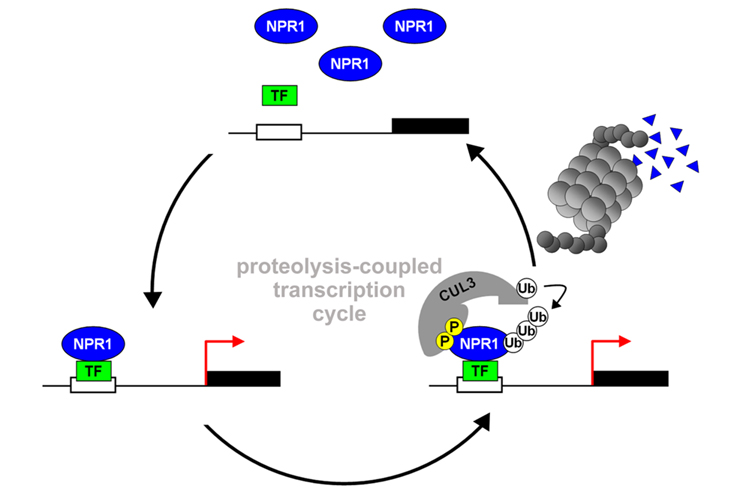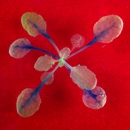Proteasome-mediated transcription
It is well known that changes in gene expression are brought about by the activity of a myriad of transcription factors. Nevertheless, how the activity of transcription factors and in particular transcription (co)activators is controlled is poorly understood. The conventional ‘text book’ knowledge describes that transcription (co)activators bind the promoters of genes and turn on gene transcription by recruiting RNA Polymerase II (PolII). Once the (co)activator dissociates from the promoter, gene transcription ceases as PolII is no longer recruited. Thus, in this model the association and dissociation of (co)activators with the DNA functions as a simple transcription ON/OFF switch. However, we now know that rather than simply being ‘ON’ or ‘OFF’, eukaryotic genes show dynamic temporal changes in expression amplitude. So how do (co)activators accommodate the cell’s requirement for rapid changes in expression amplitude?
We have previously studied this question using NPR1, a potent transcription coactivator of plant immunity. Our findings suggest a model in which NPR1 recruits PolII to target genes before being ubiquitinylated and degraded by the proteasome, thereby returning the target gene promoter to the initial state (Figure 1). Thus, in this model the rate of coactivator (i.e. NPR1) turnover directly dictates its transcriptional activity and thus, the amount of gene expression (Spoel et al., 2009 & 2010, Moore et al., 2011, Fu et al., 2012).
Our lab is trying to understand why (co)activator turnover can promote transcription initiation, how the lifetime of (co)activators is established, and if their activity changes within this window of opportunity for transcription activation.

Figure 1. Proteolysis-coupled transcription cycles control NPR1 coactivator activity
Nuclear NPR1 interacts with transcription factors (TFs) and activates target gene transcription. As a consequence NPR1 is phosphorylated (P), ubiquitinylated (Ub) by a Cullin 3 (CUL3) ligase, and degraded by the proteasome. Degradation of NPR1 clears the target gene promoter, allowing the transcription cycle to reinitiate.

